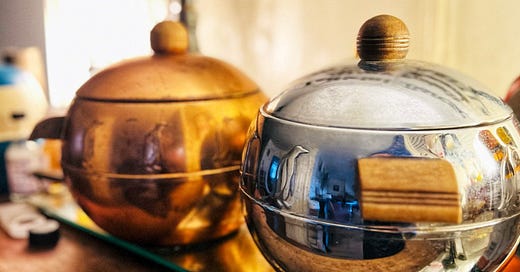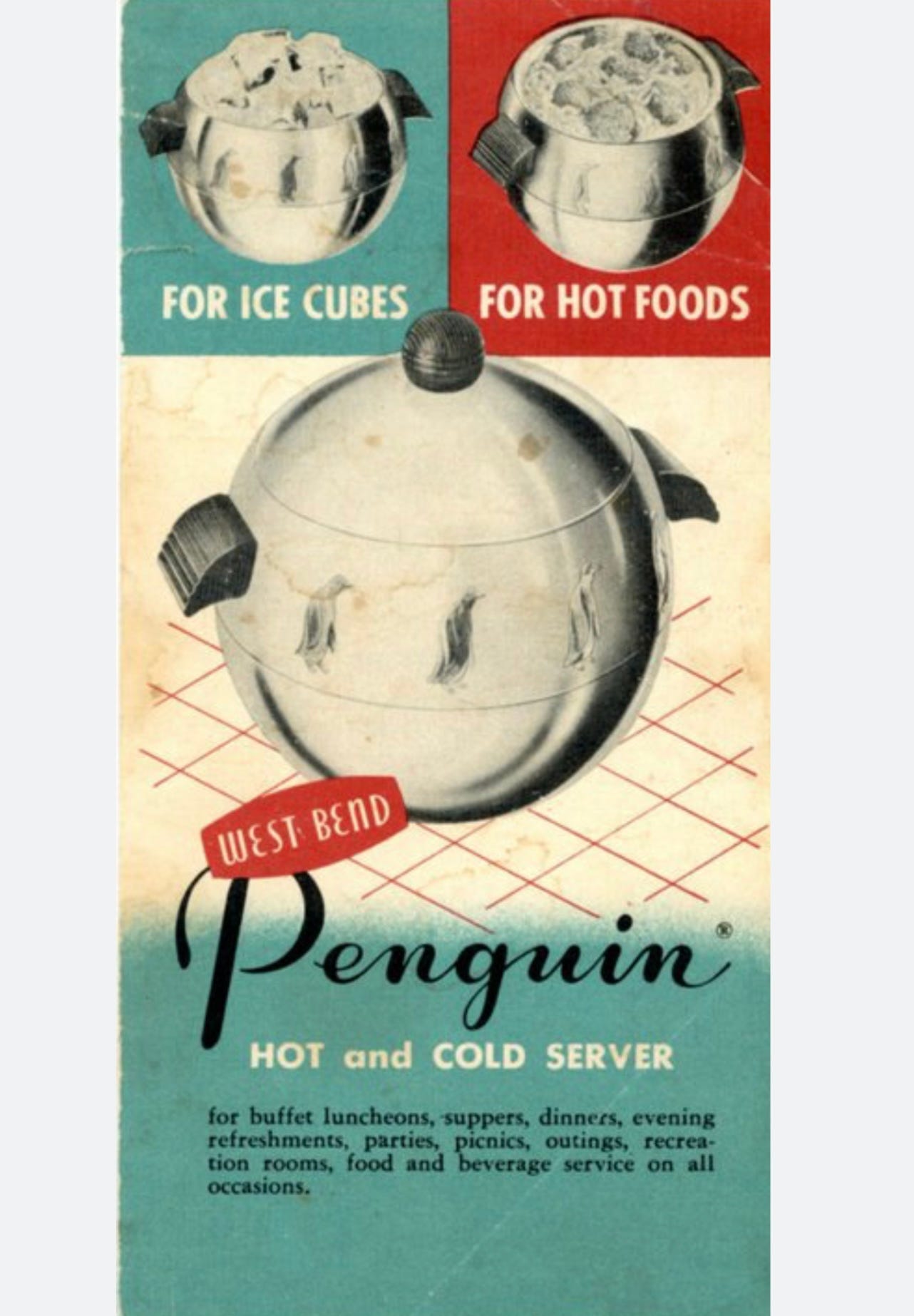The Legend of the Penguin Ice Bucket
How a $6 Aluminum Appliance from Wisconsin Became a Barware Icon.
I have long been obsessed with the Penguin Ice Bucket, a product put out by the West Bend Aluminum Company of West Bend, Wisconsin, beginning in the 1940s. You know this item. You have seen it countless times in antique stores or on eBay. Perhaps your parents or grandparents or aunt and uncle owned one. My parents did and it delighted my eye from a very young age. It instantly made frozen water and bar culture exciting and fun to my childish mind.
The ice bucket is nearly spherical in shape with a perfectly circular cover topped by a knob-like handle. Most are silver in color, but copper-colored versions were made. There are wing-like handles on either side, mostly made out of walnut, but Bakelite examples exist. The appliance gets its name from the embossed penguins, eight in number, that march along the sides of the bucket. All in all, it’s a beautiful, perfect piece of mid-20th-century industrial design.
Calling it an ice bucket is misleading, because the item was intended to have a dual purpose. Its metal cavity can keep cold things cold or hot things hot. The actual name of the product is the Penguin Hot & Cold Server. A brochure that came with the item originally recommended using it to serve spaghetti, soup, stew, fried oysters and baked beans, among other things. But I’ve only ever used it for ice and I expect most people who own one do the same. (If you don’t want consumers to immediately think of ice cubes when they look at a container, don’t put penguins on it!)
It’s made of chromium-plated steel and has a two-quart capacity. The server can keep things hot for 1-2 hours or cold for 5-6 hours owing to an insulated inner container that makes no contact with the outer metal shell. The brochure recommended using two or three of the buckets at once at parties, each containing different foods.
Which reminds me—we have to throw a Penguin Hot & Cold Server party.





